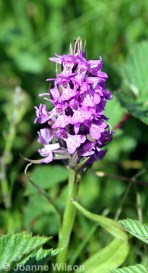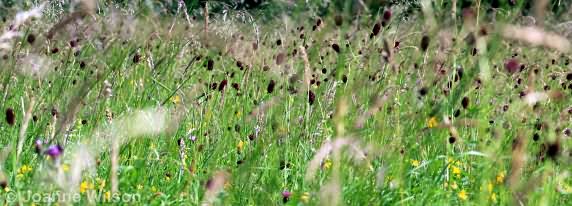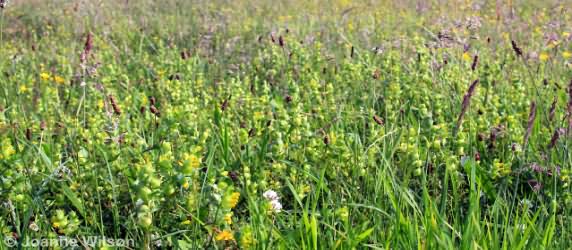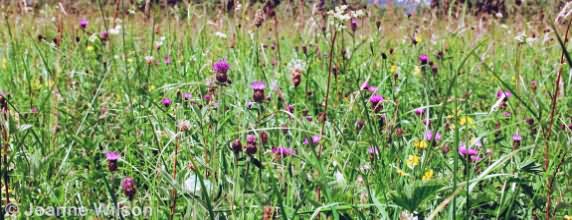 |
| The Local Time is Saturday, 27-Jul-2024 12:28:32 CEST |
Greystones Farm |
|
|||
| YOU ARE HERE: Main Home Page > Gardens > Wildlife Trusts > Greystones Farm |
|
|
|
||||||||||||
Greystones Farm - a Cotswold Nature ReserveGreystones Farm, Greystones Lane, Bourton-on-the-Water, Gloucestershire, GL54 2EN Greystones is a cattle farm managed along organic principals with grazing, silage and hay cutting making up the principle farming system. The Glouctestershire Wildlife Trust took over Greystone’s Farm in 2002. They aim
to restore grassland fields across part of the farm to species-rich neutral meadows by using seed collected from the Salmonsbury Meadow Site of Special Scientific Interest (SSSI), which is contained within the boundaries of the farm and which they also manage.
Over one hundred meadow plants have been recorded to date, some of the most interesting species include the adder’s-tongue fern (Ophioglossum vulgatum), great burnet (Sanguisorba officinalis), pepper saxifrage (Silaum silaus) and common meadow rue (Thalictrum flavum). Ten species of sedge have been identified and the uncommon broad blysmus (Blysmus compressus). Species particularly associated with wetter areas include marsh marigold (Caltha palustris), marsh valerian (Valeriana dioica), marsh arrow-grass (Triglochin palustris) and meadowsweet (Filipendula ulmaria). Orchids include the southern marsh orchid (Dactylorhiza praetermissa) and early marsh orchid (D. incarnate). The River Eye flows through the SSSI and the River Dikler forms the eastern boundary of the site. Wetland vegetation associated with the watercourses includes marsh ragwort (Senecio aquaticus), fen bedstraw (Galium uliginosum), water whorl-grass (Catabrosa aquatica), water crowfoot (Ranunculus penicillatus) and opposite-leaved pondweed (Groenlandia densa). Dominant grassland species that you can see now and that are shown in the photographs include:-
The Trust hold leaflets showing the footpaths around the site at the farm reception. The Oxfordshire Way and Diamond Way footpath and bridleway cross the farm. A visit to Grestones Farm Nature Reserve is very worthwhile whilst visiting Bourton-on-the-Water with car parking 300 metres away from the main Pay & Display car park. For further information about the Cotswolds village of - Bourton-on-the-Water For information about where to stay see - Bourton-on-the-Water Accommodation
|
||||||||||||
| BACK TO TOP | ||||||||||||
Greystones Farm Nature Reserve |
||||||||||||
| This page last modified Monday, 24-Jul-2023 11:24:48 CEST | ||||||||||||
 The SSSI fields are generally dominated by grasses such as sweet vernal grass (Anthoxanthum odoratum), Yorkshire fog (Holcus lanatus), crested dog’s-tail (Cynosurus cristatus), red fescue (Festuca rubra) and meadow fescue (F. pratensis). In the wetter areas, near the rivers, tufted hair-grass (Deschampsia cespitosa) is common and rushes such as jointed rush (Juncus articulatus), hard rush (Juncus inflexus) and soft rush (J. effuses) become dominant.
The SSSI fields are generally dominated by grasses such as sweet vernal grass (Anthoxanthum odoratum), Yorkshire fog (Holcus lanatus), crested dog’s-tail (Cynosurus cristatus), red fescue (Festuca rubra) and meadow fescue (F. pratensis). In the wetter areas, near the rivers, tufted hair-grass (Deschampsia cespitosa) is common and rushes such as jointed rush (Juncus articulatus), hard rush (Juncus inflexus) and soft rush (J. effuses) become dominant. 



